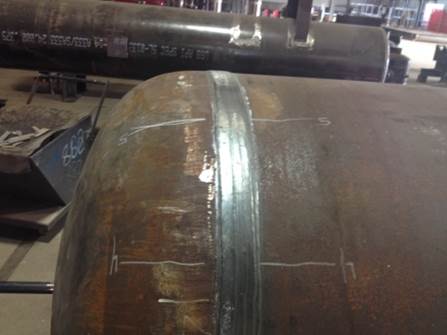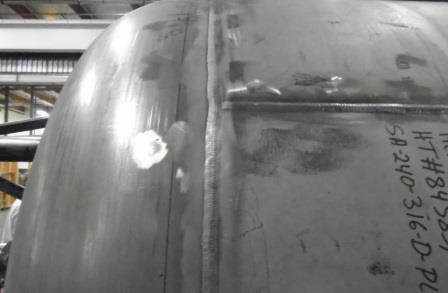What is the Ferrous Materials?
This content provides information about Ferrous Materials chemical compostion, strength, and properties. The alloys of iron cover a broad range of structural applications among the commercial metal alloys.
The ferrous materials include carbon steel, stainless steel, and low alloy steel. According to ASTM ferrous metal designation system, “A” describes a ferrous metal such as A106, "A" prefix indicates that this material is ferrous material.
These materials are obtained from iron ore by smelting and fusing to drive off impurities present in it such as sulfur, oxygen, and others. Ferrous metals can be defined as the ones which contain at least 50% of Iron in their composition.
All the commercial forms of iron and steel contain some amount of carbon and is an integral part of iron & steel metallurgy. The addition of carbon also lowers the melting point of iron (1525 °C/ 2777 °F).
Among all other alloys of iron, the carbon steel, and stainless steel found their uses in the main applications of industrial and structural segments due to their high-end properties such as strength and resistance to corrosion.
American Iron and Steel Institute (AISI) categorizes the steel into following four primary groups:
- Carbon steel
- Stainless steel
- Alloy steel
- Tool steel
Carbon Steel

The chemical composition of carbon steel has 0.6 to 1.4% of carbon. It is used for making tools, sheets, structures, machine parts, etc. The applications are not limited to tools but also in motors and electric appliances because of its ferromagnetic properties.
The carbon and manganese content in the carbon steel can be varied to develop the wide range of strengths, wear resistance values and toughness.
The specifications for low and intermediate tensile strength carbon steel plates are provided in ASME II part A. Carbon steel is further classified into the list of three categories:
- Low carbon steel (mild steel)
- Medium carbon steel
- High carbon steel
The low carbon steel contains carbon content in the range of 0.04 to 0.30%. The ultimate tensile strength values are 60 to 111 ksi. Low carbon steel is one of the most used steels in the industry.
It can be molded to the wide variety of shapes from plane sheets to structural beams. For structural steels applications, the carbon and manganese content in the carbon steel are increased. For obtaining good drawing properties, aluminum content is raised, and carbon content is lowered.
Medium carbon steel contains 0.31 to 0.60% of carbon content. The manganese content ranges from 0.61 to 1.50%. The mechanical properties of this steel are stronger than low carbon steel and are used in manufacturing crankshafts, couplings, gears, bolts, studs, axels, etc.
The high carbon steel has carbon contents of 0.61 to 1.50%. It is strongest, and brittle of both above mentioned group and is used in cutting tools, high strength wires, engine parts, etc.
Stainless Steel

Stainless steel is a ferrous material with the minimum of 13% Chromium and 6% Nickel, which makes it corrosion resistance. There are two subcategories of stainless steel as below:
- Austenitic grade
- Ferritic Grade
According to ASTM A240, the steel type 201 to 347 are categorized under Austenitic grade and from steel type 409 to 441 are ferritic grade.
Stainless steel 316 compositions in industrial and commercial applications. The maximum carbon content of this steel is 0.03%, 16 to 18% chromium, 10 to 14% Nickel, 2-4% Molybdenum, and manganese 2%.
The presence of molybdenum makes it resistant to crevice and pitting corrosion in chloride environments. The minimum value of ultimate tensile strength for this steel is 70 ksi.
In ferritic grade, stainless steel 410 is used for manufacturing hand tools, flat springs, bolts, nuts, screws, etc. It has carbon content of 0.08 to 0.15%, 11.5 to 13.5 % chromium, 0.75% nickel, 1% silicon, and 1% manganese.
This grade of steel is resistant to steam, hot gasses, mild acids and alkalies and pure water. The minimum value of ultimate tensile strength for this steel is 65 ksi.
Low Alloy Steel
Low-alloy steel is another category of ferrous materials that has superior mechanical properties to carbon steel. There are a thousand kinds of alloy steels which are made for different services and conditions.
Example of low alloy steel is AISI 4340 with composition of 1.65 to 2% nickel, 0.7 to 0.9% chromium, 0.37 to0.43% carbon, 0.2 to 0.3 % molybdenum, 0.6 to 0.8 % manganese.
This material has high strength and excellent fatigue resistance. It is used in gears, shafts, structural parts and aircraft landing gears, etc.
Ferrous Material Metallurgy
The ferrous materials are extracted from iron ore present in the form of iron oxide (haematite Fe2O3 or Magnetite Fe3O4) in the earth crust. The iron oxide is reduced in a blast furnace with the addition of limestone and coke (a form of carbon).
The temperature in the blast furnace is 1525 °C (2777 °F). Feed is entered from the top of the furnace, coke burns to produce heat and carbon dioxide which further reacts with incoming coke to produce carbon monoxide which reduces the iron oxide into iron.
The addition of limestone helps in removing silica oxide. Molten cast iron is obtained from the bottom of the furnace and can be used to make a variety of ferrous material products including carbon steel and stainless steel. For making steel, the impurities such as sulfur, carbon, and other elements are removed by various methods.